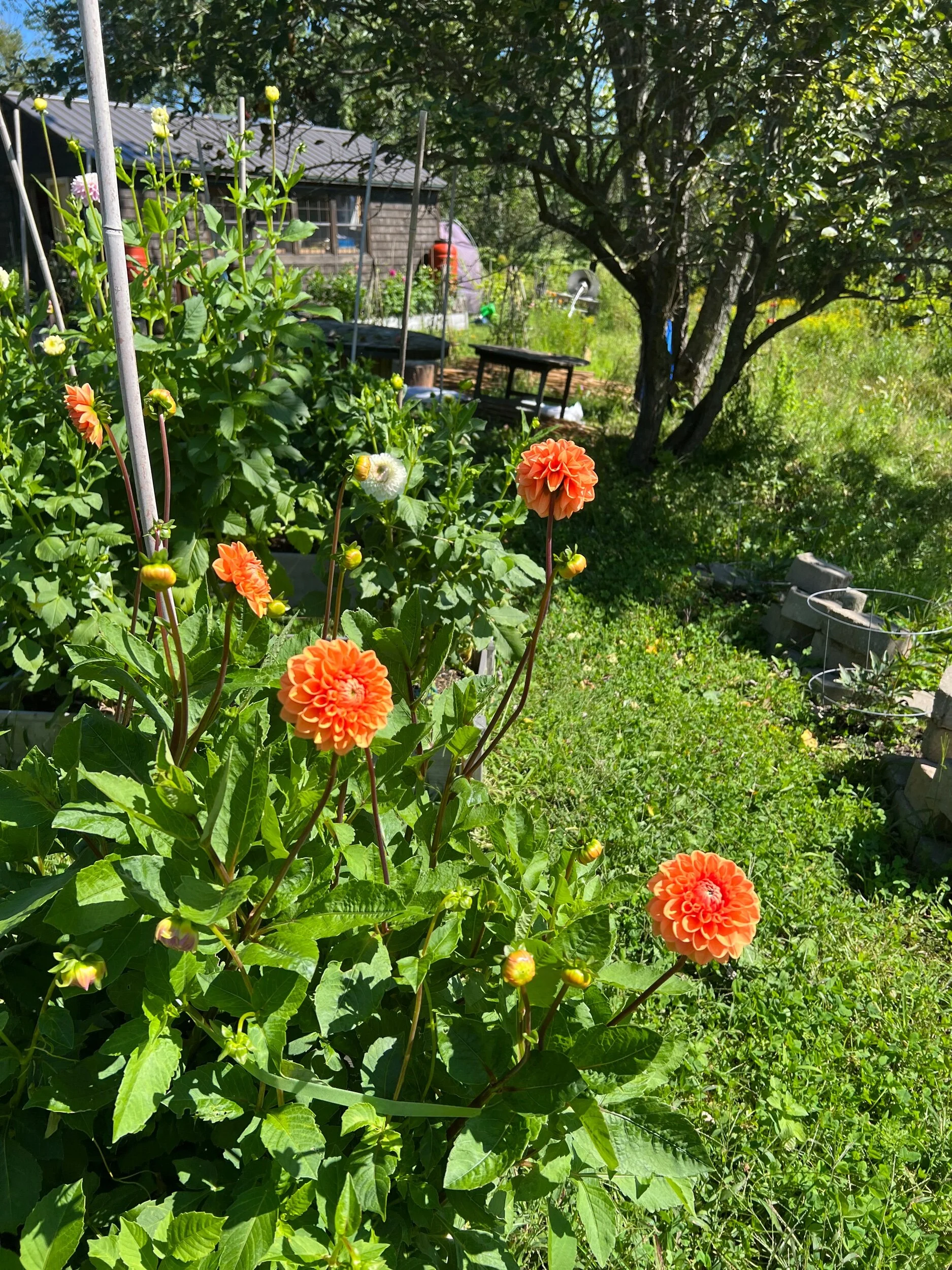I provide for the birds and other pollinators, and I keep part of my property uncultivated to support a healthy wildlife ecosystem. I introduce beneficial insects like nematodes and lacewings to help with pest control.
I’m always happy to talk about my methods and philosophies!
Green Farming
I want my farm to work in concert with wildlife, pollinators, and native plants. Below is a partial list of the things I do with intention at the farm. Even with all of these measures, I understand that I will always lose a little of my flower yield to wildlife. I call this the Wildlife Tax. It’s unavoidable.
I leave a large portion of my one-acre farm deliberately overgrown to sustain wildlife habitat. If I can co-exist with critters, they are less likely to dig up my flowers. In theory.
I use molasses to raise my dahlia plants’ Brix number as a pest deterrent.
I aim for 80% native plants and flowers. (Dahlias are not native, but anything else I plant is with intention towards supporting a healthy habitat.)
In my first three seasons, I planted over two dozen saplings—lilac, hemlock, dappled willow, and others—to offer wind and sun protection.
I use bamboo stakes for my dahlias. Because deer have issues with depth perception, I found out quite by accident that they will not stomp through garden beds that have bamboo stakes zig-zagged every 12 inches.
I use solar-powered rodent deterrents. They are staked in the ground and emit a clicking noise when anything (including me) approaches.
I line my garden beds with hardware cloth, burlap, and crushed stone to deter tunneling animals.
I’ve placed wind chimes in my planting areas to deter deer. In theory.
I use beneficial insects like nematodes and lacewings to manage pests.
I mix water and diluted peppermint soap in a sprayer for a foliar spray applied at dusk when rain is not in the forecast. I do not use pesticides, not even Neem Oil, since the majority of its ingredients are listed as unknown.
I use copper mesh rings around the base of each plant to deter slugs.
I prune the lower 12 inches of each plant heavily for airflow and to remove slug bridges into the dahlia plants.
I sprinkle Sluggo around the base of each dahlia plant.
I used to put a spoonful of bone meal in when I planted each tuber, but I found the aroma drew curious creatures, so now I use wood ash instead.
Once plants are established, I use Dr. Earth’s Flower Girl Organic Bud and Bloom Booster instead of chemical fertilizers.
I run about six different soil tests in early Spring to see what nutrients my planting areas might need, and then research ways to feed my soil without chemical additives.
I minimize plastic use at the farm. If I do use it, I’m mindful to source it secondhand if possible. Many times, ecologically friendlier options exist, such as jute hortnova netting instead of plastic netting.
